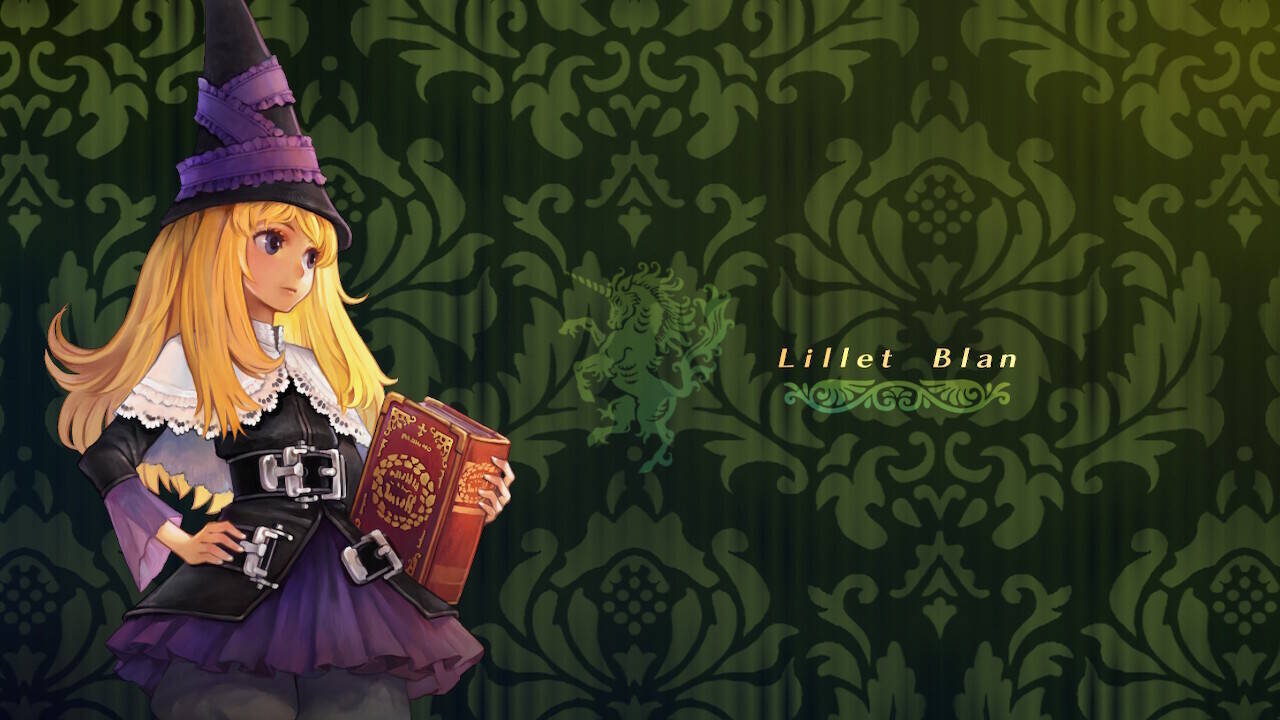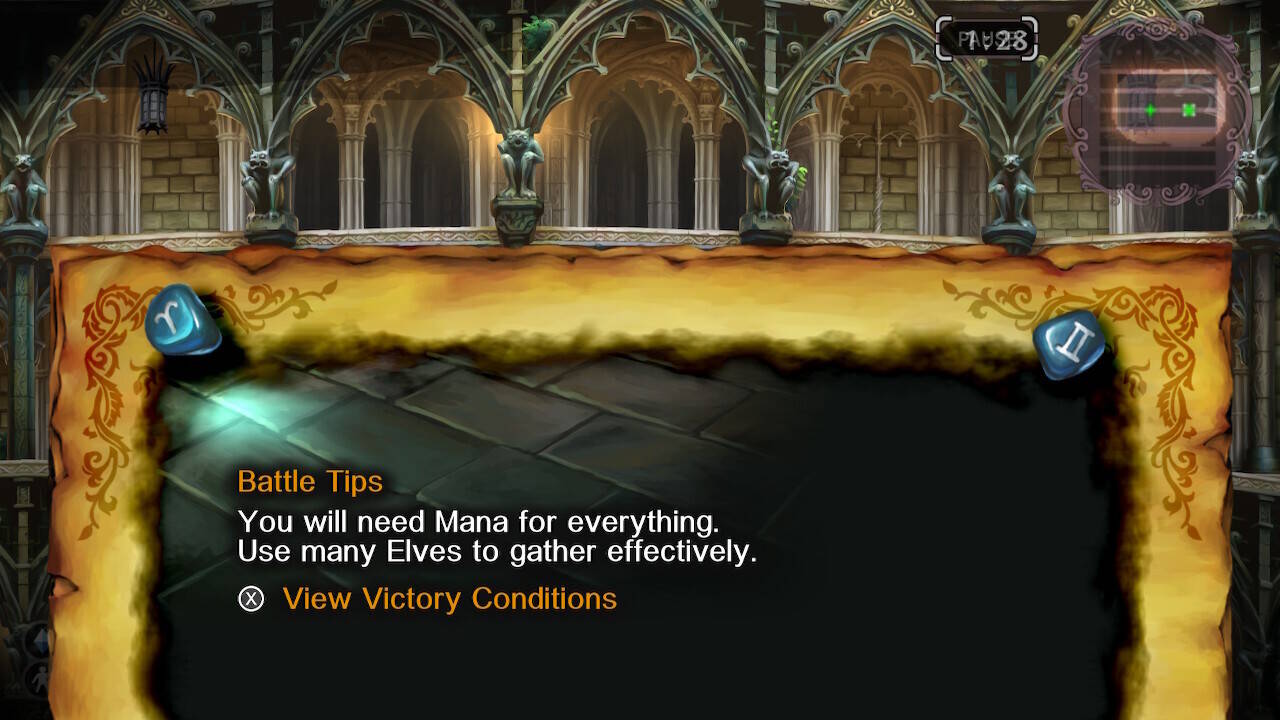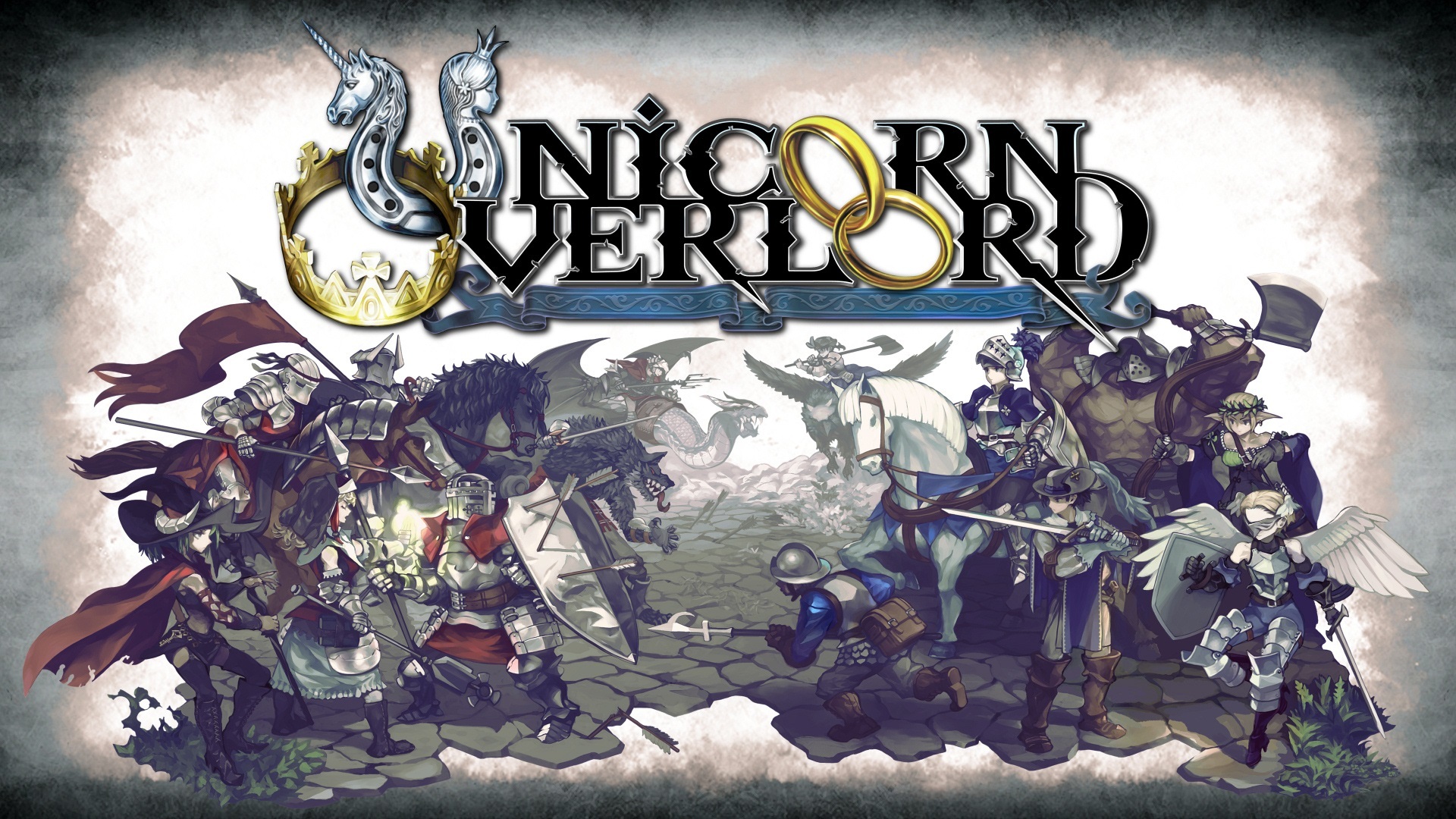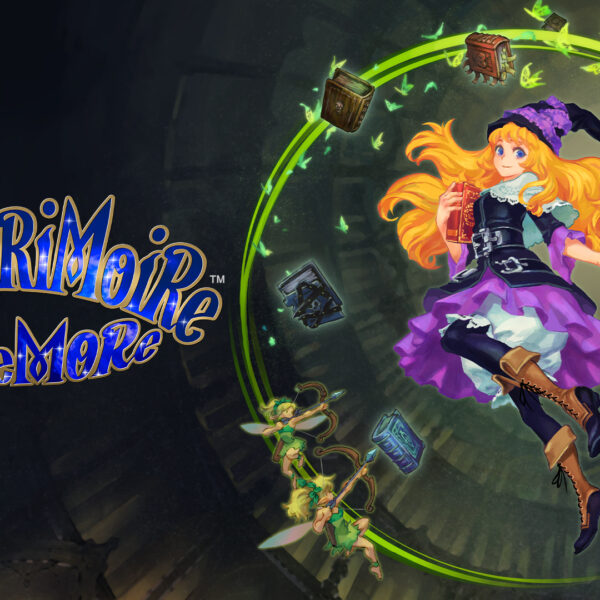
Labyrinth of Zangetsu is a first-person dungeon crawler that will keep you on your toes.
September 29, 2023
Take the initiative! Rhapsody II: Ballad of the Little Princess.
October 19, 2023Loop yourself into Grim Grimoire Once More.
I’ve played a lot of video games. As such, I know which ones I consider myself to be good at and which ones I’m not so good at. One of the genres that fall into the latter category are real-time strategy games. RTS’ and I never meshed. My problem with games like Warcraft III or Command and Conquer was that I would try to brute force my way through all the challenges. Obviously, that’s not the way to go. So, even before going into Grim Grimoire Once More (stylized as GrimGrimoire OnceMore) I knew that I would be facing an uphill battle. But, Vanilla Ware’s presentation, a seemingly adorable lead character, and the promise of a unique plot revolving around a time loop was too good to pass up. Despite some initial frustration, I’m glad I took a chance with Grim Grimoire. I had a lot of fun. I think others worried about the barrier of entry with RTS’ will have a lot of fun, too.
The story of Grim Grimoire centers around the adorable wizard in training, Lillet Blan. Starry eyed and ready to learn, Lillet has arrived at the Silver Star Tower to begin her training. Her first four days and four nights are filled with the usual stuff any student encounters: new friends, new teachers, new lessons. Unfortunately, on the evening of the fifth day, something happens. An evil spirit called Calvaros gets released and begins killing both teachers and students alike. Calvaros is seeking the Philosopher’s Stone, which is said to be in the Silver Star Tower. Lillet is cornered by Calvaros, but just before things get bad for our heroine, the clock strikes midnight. Lillet gets transported back to her first day the Silver Star Tower. Armed with the knowledge of being caught in a time loop and with the ability to retain all her wizardry training, she’s the only one that can put a stop to Calvaros and escape the time loop. It’s a big ask for young Lillet. She just wanted to go to school, train to become a powerful wizard, provide for her family, and live her life. Alas, these were the cards she was dealt. It’s an interesting story that has equal parts mystery and magic. Along the way, Lillet’s teachers and classmates will reveal that they have more to them than meet the eye.

So, what does Lillet have to do to escape the time loop and stop Calvaros? Stealthily sneak around the tower and collect clues? Go through gauntlets of enemy forces using her magic to blast them away? Equip various pieces of gear so she can zap her enemies in action packed combat? None of the above. Instead, she’ll take a seat, summon a multitude of mythological troops, and command them to fulfill various requests in real-time strategy battles. If you’re familiar with these, then you know what to expect. If not, then I’ll try to break it down. Lillet needs Mana to do anything. At the start of a stage, she’ll have some Mana which she can use to draw Runes. Runes are used to summon creatures at the cost of some Mana. The basic creatures you can summon, such as Elves, Imps, or Ghosts can be used to transform crystals located throughout the stages into pools for Mana gathering. You’ll command these basic creatures to go back and forth between the Rune and the crystal to gather Mana. As Mana accumulates, you’ll be able to draw more Runes and summon higher level creatures depending on the type of Rune drawn. Runes can be leveled up (using Mana, of course) to give the troops that come from them more boosts. These include Fairies which can be used as scouts, to massive Dragons that take up a good chunk of the screen. Your goal is to usually destroy the enemies Runes while protecting your own. Sometimes, the missions have you hold off enemy troops (i.e. withstand attacks) for anywhere between 10 and 20 minutes. If things get dire, Lillet has access to spells that can heal her troops, rewind time, blast a large array of enemies, and more. But, their usage is limited.
The key to victory is resource management and, as I initially learned the hard way, not brute forcing your way through to victory. This even applies to Easy mode. The game gives you access to a ton of different summons that each have their own unique abilities. Using coins earned from battle, these troops can be powered up. It can be overwhelming having so many options. In truth, most of my strategies involved summoning as many Morning Stars as possible and sending them out for both recon and attacking. However, there were times I had to rethink, regroup, and retry to see my way to victory. Eventually, I found my groove and got to a point where I looked forward to each new challenge. So, those like me that were not keen on the idea of RTS combat and the troop management it involves will hopefully find their groove, too.
When you’re not in combat, you’ll be in Lillet’s room. Here, you can move the story forward, rewatch old cut scenes, admire lovely artwork and more in a glossary, and challenge yourself in extra battles. These extra battles are completely optional, but they reward you with more coins and bonus artwork upon completion. I participated in a few of them just to challenge myself. The game is very generous with the number of coins given. Most of the story battles have a bonus objective that will give you additional coins if you fulfill it. I had more coins than I knew what to do with by the time I finished. Lillet’s room is also the place where you can save/load your game and adjust the difficulty. It’s worth noting that some upgrades are locked behind difficulty level.

Whether you’re in combat, in a menu, or in the middle of the story moving forward, you’ll be privy to Vanilla Ware’s stunning presentation. Originally on the PlayStation 2, Grim Grimoire Once More looks as beautiful as one would expect a Vanilla Ware game to look. The character animations during the story sequences are large and bold; complete with plenty of expressions. Witnessing the story is almost tantamount to watching an anime since characters voice their lines automatically. I opted for the English voice overs, but both options feature excellent acting. The level of detail given to every troop type in combat is beyond impressive. Every action, nay, every animation is like a work of digital art. I played on Switch and notice no differences in performance and crispness when switching from docked to handheld. I recommend docked, though. Vanilla Ware artwork is best observed on a large screen. To top this all off, Hitoshi Sakimoto composed the soundtrack from top to toe. It’s wonderful and fits the whimsical yet bleak setting of the game.
Thanks to the handy fast-forward and autosave functions, Grim Grimoire Once More’s story doesn’t take long to complete. It took me just shy of 10 hours. I have no shame in saying that I played the game on Easy mode, which probably explains why the playtime was brisk. I anticipate a longer playtime for those that play on Normal or Hard, and for those that want to complete every extra battle. Personally, I wanted to end the game on a high note. The extra battles got progressively more difficult, and I didn’t want the high of completing my first RTS to drop too quickly. That said, Grim Grimoire Once More is an RTS that is accessible to anyone. This applies to those not familiar or skilled with them. If you enjoy a high fantasy setting with a unique tale, then the RTS aspects should add to that enjoyment.
Overall, 8.5/10: Grim Grimoire Once More is the definitive way to experience Vanilla Ware’s magical tale of time. It’s a creative and colorful tale that grants access to all skill levels.





